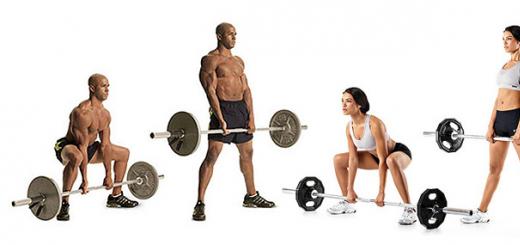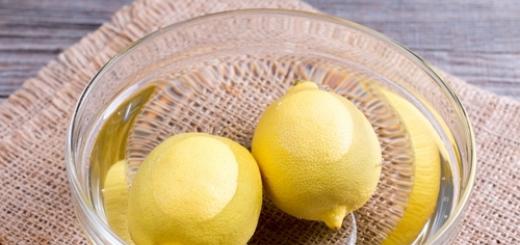The cooling system provides heat removal from various mechanisms, devices, devices and working media in heat exchangers. Water-cooled systems are common in marine power plants due to a number of advantages. These include high efficiency (thermal conductivity of water is 20 - 25 times higher than that of air), less influence external environment, more reliable start-up, the possibility of using the waste heat.
In diesel installations the cooling system serves to cool the working cylinders of the main and auxiliary engines, the gas exhaust manifold, charge air, oil of the circulating lubrication system and the air coolers of the starting air compressors.
Cooling system in steam turbine plants designed to remove heat from condensers, oil coolers and other heat exchangers.
Cooling system for gas turbine plants used for intercooling of air at multistage compression, cooling of oil coolers, parts of gas turbines.
In addition, in installations of any type, the system serves to cool the thrust and thrust bearings of the shafting, to pump stern tubes, and is used as a reserve for the fire-fighting system. Marine cooling systems use outboard and fresh water, oil and air as the working fluid. The choice of coolant depends on the temperatures of the heat sink, design features and sizes of cooling units and apparatuses. The most widely used as a coolant is fresh and outboard water. Oil is rarely used in cooling systems, for example, for cooling pistons of internal combustion engines. This is due to its significant disadvantages compared to water (high cost, low heat capacity). At the same time, oil as a coolant has valuable properties, a high boiling point at atmospheric pressure, low pour point, low corrosivity.
Air is used as a cooling medium in gas turbines. To cool GTU parts, air of the required pressure is taken from the pressure pipelines of the compressors.
Cooling systems are divided into flow and circulation. In flow systems, the cooling working fluid is discarded at the outlet of the system.
In circulating cooling systems, a constant amount of coolant repeatedly passes through a closed circuit, and the heat from it is removed to the cooling working fluid of the flow system. In this case, two flows take part in the cooling, and the systems are called double-circuit.
Centrifugal pumps are used as circulation pumps for fresh and sea water.
Cooling systems for diesel power plants almost always double-circuit: the engines are cooled by closed-circuit fresh water, which, in turn, is cooled by sea water in a special refrigerator. If the engine is cooled by a flow system, cold outboard water will be supplied to it, the heating temperature of which should not be higher than 50 - 55 ° С. At these temperatures, salts dissolved in it can be released from the water. As a result of salt deposits, the transfer of heat from the engine to water is difficult. In addition, the cooling of engine parts with cold water leads to increased thermal stresses and a decrease in diesel efficiency. Closed-loop cooling systems used in diesel engines make it possible to have clean cooling cavities and easily maintain the most favorable water cooling temperature, adjusting it in accordance with the engine operating mode.
Each engine room, in accordance with the requirements of the Maritime Register of Shipping, must have at least two sea chests, which ensure the intake of outboard water in any operating conditions.
It is recommended to place sea water intakes in the bow of the engine rooms, as far as possible from the propellers. This is done to reduce the likelihood of air entering the seawater intake pipes when the propeller is in reverse gear.
The design seawater temperature for ships with an unrestricted navigation area is 32°C, and for icebreakers 10°C. The largest amount of heat is removed by outboard water in the STP cooling system, which is 55 - 65% of all fuel released during combustion. In these plants, heat is mainly removed by steam condensation in the main condensers.
Diesel cooling mode is determined by the temperature difference of fresh water at the inlet to the engine and at the outlet of it. In the main slow-speed engines, the temperature at the inlet to the engine is at the level of 55°C, and at the outlet 60 - 70°C. In the main medium-speed and auxiliary diesel engines, this temperature is 80 - 90°C. Below these values, the temperature is not lowered for reasons of increasing thermal stresses and reducing the efficiency of the working process, and an increase in cooling temperatures, despite the improvement in diesel performance, significantly complicates the engine itself, the cooling system and operation.
The water pressure of the internal cooling circuit of diesel engines must be slightly higher than the sea water pressure in order to prevent the sea water from entering the fresh water in the event of a leak in the cooler pipes.
On fig. 25 is a schematic diagram of the double-loop cooling system of the DEU. The bushings of the working cylinders 21 and covers 20 are cooled with fresh water, which is supplied by the circulation pump 11 through the water cooler 8. The water heated in the engine is supplied through the pipeline 14 to the pump 77.
From the highest point of this circuit, a pipe 7 departs to an expansion tank 5 connected to the atmosphere. The expansion tank serves to replenish the circulation cooling system with water and to remove air from it. In addition, if necessary, a reagent can be supplied from tank 6 to the expansion tank, which reduces the corrosive properties of water. The temperature of fresh water supplied to the engine is controlled automatically by thermostat 9, which bypasses more or less water in addition to the refrigerator. The temperature of fresh water leaving the engine is maintained by a thermostat at the level of 60...70°C for low-speed diesel engines and 8O...9O°C for medium- and high-speed ones. Parallel to the main circulation pump fresh water 11 is connected to a backup pump 10 of the same type.
Outboard water is received by the centrifugal pump 17 through the onboard or bottom kingstones 7, through the filters 19, which partially clean the water coolers from silt, sand and dirt. In parallel with the main sea water pump 77, the system has a standby pump 18. After the pump, sea water is supplied to pump oil cooler 12, fresh water cooler 8.
In addition, part of the water through the pipeline 16 is sent to cool the charge air of the engine, air compressors, shafting bearings and other needs. If it is planned to cool the pistons of the main diesel engine with fresh water or oil, then, in addition to the above, the sea water also cools the heat-removing medium of the pistons.
Rice. 25.
The outboard water line at the oil cooler 12 has a bypass (bypass) pipeline 13 with a thermostat 75 to maintain a certain temperature of the lubricating oil by bypassing the outboard water in addition to the cooler.
The heated water after the water cooler 8 is discharged overboard through the drain valve 4. In cases of too low sea water temperature and ice slush entering the kingstones, the system provides for an increase in the sea water temperature in the intake pipeline due to the recirculation of heated water through pipe 2. The amount of water returned to the system is regulated valve 3.
Cooling of the main engine is carried out with fresh water in closed circuits. The cooling system of each engine is autonomous and is serviced by pumps mounted on the engines, as well as separately installed fresh water coolers and an expansion tank common to both engines.
The cooling system is equipped with thermostats that automatically maintain the set fresh water temperature by bypassing it in addition to the water coolers. There is also the possibility of manually adjusting the water temperature.
An oil cooler is included in each fresh water circuit, into which water enters after the water cooler and thermostat. The filling of the expansion tank is provided from the water supply system in an open way.
The auxiliary engine is cooled with fresh water in a closed circuit. The auxiliary engine cooling system is autonomous and is serviced by a pump mounted on the engine, a water cooler and a thermostat.
The expansion tank with a capacity of 100 liters is equipped with an indicator column, a low level indicator, a neck.
Sea water cooling system
To receive sea water, two sea chests are provided, connected through a filter and clink valves with a sea sea line.
The cooling systems of the main and auxiliary engines are autonomous and are serviced by mounted sea water pumps. Mounted pumps of the main engines take water from the Kingston line, pump it through the water coolers and through non-return valves located below the waterline, overboard.
The auxiliary engine pump takes water from the seawater line, pumps it through the water cooler and through the non-return valve overboard below the waterline. It is also provided that water is supplied to the intake pipeline of the auxiliary engine pump from the pressure pipeline of the outboard water pump of the starboard main engine. A bypass pipe is provided to allow temperature control of the auxiliary engine cooling water.
From the pressure pipelines of the outboard water pumps of each main engine, water withdrawals are provided for cooling the thrust and sterntube bearings of the corresponding side.
From the outflow lines of the main engines, water withdrawals are provided for recirculation into the corresponding kingston boxes.
Cooling of the compressed air compressor with outboard water is carried out from a special electric pump with water outflow below the waterline overboard.
As a cooling pump for the electric compressor, a centrifugal horizontal single-stage electric pump ETsN18/1 with a supply of 1 m3 at a pressure of 10 m of water column is installed.
Compressed air system
MKO has 2 compressed air cylinders with a capacity of 60 kgf/s m2.
From one cylinder, air is used to start the main engines, to operate the typhon and for household needs, the other cylinder is a reserve and the air from it is used only to start the main engine. The total supply of compressed air on the ship provides at least 6 starts of one main engine prepared for start-up without pumping air in cylinders. To reduce the pressure of compressed air, appropriate pressure reducing valves are installed.
Filling of cylinders with compressed air is provided from one automated electric compressor.
Compressed air cylinders with a capacity of 40 liters each are equipped with heads with the necessary fittings, a pressure gauge and a blowing device.
These heat exchangers are designed to cool heated liquids and gases (drinking water, lubricating oil, outside air, etc.). Of particular importance for the normal operation of the ship power plant are oil coolers designed to cool the oil heated during the lubrication of the main engine, auxiliary mechanisms and individual shafting units.
On fig. 32 shows the design of a tubular oil cooler, the most common on marine vessels. The oil cooler consists of a steel cylindrical body 5, top and bottom covers 1, two tube plates 2, diaphragms 10, cooling tubes 4 and tie rods 12. Flanges are welded to the body at both ends, to which covers are attached with studs. Brass tubes 4 are flared in the tube boards, through which cooling outboard water flows. To allow thermal expansion of the tubes, the lower tube plate is movable; together with the bottom 1, it can move in the stuffing box 13. The oil to be cooled enters the oil cooler housing through the upper pipe 6 and washes the tubes from the outside. For better washing of the tubes with oil, diaphragms 10 are installed inside the housing, which force the oil flow to change direction several times. The cooled, less viscous oil for lubricating shafting and turbine bearings is discharged through the middle pipe 11, and the more viscous oil for lubricating the gearbox through the lower pipe 3.
Rice. 32. Oil cooler.
There is a partition in the cavity of the top cover, so the cooling water, having entered the inlet pipe 8 of the top cover, goes down through the pipe 9, and then rises up through the cooling tubes and is discharged overboard through the pipe 7 of the top cover.
To control the oil pressure and temperature, the oil cooler is equipped with instruments and fittings.
Modern ships are equipped with air conditioning units, which include air coolers. The air cooler works in the same way as the oil cooler. In a steel welded case, usually rectangular section, insert tube boards with tubes rolled into them, having ribs along outer surface to increase the cooling surface. Covers are attached to the body on both sides. Cooling water or other liquid (for example, brine) flows through the pipes, and the air enters the cooler body and, after cooling, is sent to the room to be cooled. In the cold season, the air cooler can work as an air heater, if not cold, but hot water is passed through the tubes.
In addition to these, there are coolers and other designs: oil coolers with telescopic tubes, water coolers and air coolers with tubes made in the form of coils.
Refrigerating machines on ships are used for different purposes - conditioning cabins, cooling holds, freezing when catching fish. The functions assigned to the machine entirely depend on the purpose and type of vessel. For example, passenger ships need constant high-quality ventilation to make passengers feel comfortable. It is also necessary to provide holds for storing food supplies for the entire duration of the sailing. Refrigerating machines on ships for catching fish usually have a richer set of equipment. It is necessary for the rapid cooling of freshly caught fish, its freezing and long-term storage. It is very important to keep the product fresh until it is delivered to fish processing plants and warehouses.
5 reasons to buy refrigeration machines from AkvilonStroyInstallation
- Non-standard approach to the development of refrigeration machines
- Use of energy saving technologies
- Best value for money on the market
- Minimum production time for non-standard refrigerating machines
- Climatic version for all regions of Russia
SUBMIT YOUR APPLICATION
That is, within the framework of ongoing technological processes installations should solve the following tasks:
- Cool freshly caught fish to the required temperature. Generate ice suitable for cooling products. Provide quick freezing with subsequent storage. Create the right temperature range for salted and canned fish.
- They are made of more resistant materials that are resistant to corrosion, the negative effects of salt water and atmospheric phenomena. They are distinguished by more compact dimensions and low weight. They have an increased level of reliability, as they are operated in more severe conditions - with constant vibration and pitching.
What ? Chiller is refrigeration unit used for cooling and heating liquid heat carriers in central air conditioning systems, which can be air handling units or fan coils. Basically, a chiller for cooling water is used in production - various equipment is cooled. By the water better performance compared to a glycol blend, so running on water is more efficient.
A wide power range makes it possible to use the chiller for cooling in rooms of various sizes: from apartments and private houses to offices and hypermarkets. In addition, it is used in the food and beverage industry, in the sports and recreation industry for cooling skating rinks and ice rinks, and in the pharmaceutical industry for cooling medicines.
There are the following main types of chillers:
- monoblock, air condenser, hydronic module and compressor are in one housing;
- chiller with a remote condenser to the street (the refrigeration module is located indoors, and the condenser is taken out to the street);
- a chiller with a water condenser (used when the minimum dimensions of the refrigeration module in the room are needed and it is not possible to use a remote condenser);
- heat pump, with the possibility of heating or cooling the coolant.
How the chiller works
The theoretical basis on which the principle of operation of refrigerators, air conditioners, refrigeration units is built is the second law of thermodynamics. The refrigerant gas (freon) in refrigeration units performs the so-called reverse Rankine cycle- a kind of reverse Carnot cycle. In this case, the main heat transfer is based not on compression or expansion of the Carnot cycle, but on phase transitions - and condensation.An industrial chiller consists of three main elements: a compressor, a condenser and an evaporator. The main task of the evaporator is to remove heat from the cooled object. For this purpose, water and refrigerant are passed through it. Boiling, the refrigerant takes energy from the liquid. As a result, water or any other coolant is cooled, and the refrigerant is heated and passes into a gaseous state. After that, the gaseous refrigerant enters the compressor, where it acts on the compressor motor windings, contributing to their cooling. In the same place, hot steam is compressed, again heating up to a temperature of 80-90 ºС. Here it is mixed with oil from the compressor.
In a heated state, freon enters the condenser, where the heated refrigerant is cooled by a stream of cold air. Then comes the final cycle of work: the refrigerant from the heat exchanger enters the subcooler, where its temperature decreases, as a result of which the freon passes into a liquid state and is fed into the filter-drier. There he gets rid of moisture. The next point on the path of the refrigerant is a thermal expansion valve, in which the freon pressure decreases. After exiting the thermal expander, the refrigerant is low pressure vapor combined with a liquid. This mixture is fed into the evaporator, where the refrigerant boils again, turning into vapor and superheating. Superheated steam leaves the evaporator, which is the beginning of a new cycle.

Scheme of operation of an industrial chiller

#1 Compressor
The compressor has two functions in the refrigeration cycle. It compresses and moves the refrigerant vapor in the chiller. When vapors are compressed, the pressure and temperature increase. Next, the compressed gas enters where it cools and turns into a liquid, then the liquid enters the evaporator (at the same time, its pressure and temperature decrease), where it boils, turns into a gas state, thereby taking heat from the water or liquid that passes through the evaporator chiller. After that, the refrigerant vapor enters the compressor again to repeat the cycle.
#2 Air-Cooled Condenser
An air-cooled condenser is a heat exchanger where the heat absorbed by the refrigerant is released to the surroundings. The condenser usually receives compressed gas - freon, which is cooled to and, condensing, passes into the liquid phase. A centrifugal or axial fan blows air through the condenser.
#3 Relay high pressure(High Pressure Limit)
Protects the system from overpressure in the refrigerant circuit.
#4 High Pressure Pressure Gauge
Provides visual indication of refrigerant condensing pressure.
#5 Liquid Receiver
Used to store freon in the system.
#6 Filter Drier
The filter removes moisture, dirt, and other foreign matter from the refrigerant that will damage the refrigeration system and reduce efficiency.
#7 Liquid Line Solenoid
A solenoid valve is simply an electrically operated stopcock. It controls the flow of refrigerant, which closes when the compressor stops. This prevents liquid refrigerant from entering the evaporator, which could cause water hammer. Water hammer can cause serious damage to the compressor. The valve opens when the compressor is on.
#8 Refrigerant Sight Glass
The sight glass helps to observe the flow of liquid refrigerant. Bubbles in the liquid stream indicate a lack of refrigerant. The moisture indicator provides a warning if moisture enters the system, indicating that maintenance is required. The green indicator does not signal any moisture content. A yellow indicator signals that the system is contaminated with moisture and requires Maintenance.
#9 Expansion Valve
A thermostatic expansion valve or expansion valve is a regulator, the position of the regulating body (needle) of which is determined by the temperature in the evaporator and whose task is to regulate the amount of refrigerant supplied to the evaporator, depending on the overheating of the refrigerant vapor at the outlet of the evaporator. Therefore, at any given time, it must only supply the evaporator with the amount of refrigerant that, given the current operating conditions, can be completely evaporated.
#10 Hot Gas Bypass Valve
Hot Gas Bypass Valve (capacity regulators) are used to bring the compressor capacity to the actual load on the evaporator (installed in the bypass line between the low and high pressure sides of the refrigeration system). A hot gas bypass valve (not standard on chillers) prevents short compressor cycling by modulating compressor power. When activated, the valve opens and bypasses the hot refrigerant gas from the discharge into the liquid refrigerant stream entering the evaporator. This reduces the effective throughput of the system.
#11 Evaporator
An evaporator is a device in which a liquid refrigerant boils, absorbing the heat of evaporation from the coolant passing through it.
#12 Low Pressure Refrigerant Gauge
Provides visual indication of refrigerant evaporation pressure.
#13 Low Refrigerant Pressure Limit
Protects the system from low pressure in the refrigerant circuit so that water does not freeze in the evaporator.
#14 Coolant Pump
Pump for circulating water in a refrigerated circuit
#15 Freezestat Limit
Prevents liquid freezing in the evaporator
#16 Temperature sensor
A sensor that indicates the temperature of the water in the cooling circuit
#17 Coolant Pressure Gauge
Provides a visual indication of the pressure of the coolant supplied to the equipment.
#18 Water Make-Up Solenoid
Turns on when the water in the tank drops below the allowable limit. The solenoid valve opens and the tank is topped up from the water supply to the desired level. The valve is then closed.
#19 Reservoir Level Float Switch
Float switch. Opens when the water level in the tank drops.
#20 Temperature Sensor 2 (From Process Sensor Probe)
A temperature sensor that indicates the temperature of the heated water that is returned from the equipment.
#21 Evaporator Flow Switch
Protects the evaporator from freezing water in it (when the water flow is too low). Protects the pump from dry running. Indicates the absence of water flow in the chiller.
#22 Reservoir
To avoid frequent start-ups of compressors, a capacity of increased volume is used.
A water-cooled chiller differs from an air-cooled chiller in the type of heat exchanger (instead of a tube-fin heat exchanger with a fan, a shell-and-tube or plate heat exchanger is used, which is cooled by water). Water cooling of the condenser is carried out by recycled water from a dry cooler (, drycooler) or cooling tower. In order to conserve water, a dry-cooler with a closed water circuit is preferred. The main advantages of a chiller with a water condenser: compactness; the possibility of internal placement in a small room.
Questions and answers
Question:Is it possible to cool the liquid on the duct by more than 5 degrees with a chiller?
The chiller can be used in a closed system and maintain the desired water temperature, for example, 10 degrees, even if the return temperature is 40 degrees.
There are chillers that cool the water to the channel. It is mainly used for cooling and carbonating drinks, soft drinks.
What is better chiller or drycooler?
The temperature when using the drycooler depends on the ambient temperature. If, for example, it is +30 outside, then the coolant will be with a temperature of +35 ... + 40C. The drycooler is used mainly in the cold season to save electricity. Chiller can get the desired temperature at any time of the year. It is possible to manufacture a low-temperature chiller to obtain a liquid temperature with a negative temperature of up to minus 70 C (the coolant at this temperature is mainly alcohol).
Which chiller is better - with a water or air condenser?
The water-cooled chiller has a compact size, so it can be placed indoors and does not generate heat. But cold water is required to cool the condenser.
A chiller with a water condenser has a lower cost, but a dry cooler may be additionally required if there is no source of water - a water supply or a well.
What is the difference between chillers with and without a heat pump?
A chiller with a heat pump can work for heating, i.e. not only cool the coolant, but also heat it. Keep in mind that as the temperature decreases, the heating deteriorates. Heating is most effective when the temperature drops below minus 5.
How far can the air condenser be moved?
Typically, the condenser can be moved up to 15 meters. When installing an oil separation system, the height of the condenser is possible up to 50 meters, subject to the correct selection of the diameter of the copper lines between the chiller and the remote condenser.
To what minimum temperature does the chiller operate?
When installing a winter start-up system, the chiller can operate up to an ambient temperature of minus 30 ... -40. And when installing arctic fans - up to minus 55.
Types and types of schemes for liquid cooling installations (chillers)


It is used if the temperature difference ∆T well = (T Nzh - T Kzh) ≤ 7ºС (cooling of technical and mineral water)
2. Scheme of liquid cooling using an intermediate coolant and a secondary heat exchanger.

It is used if the temperature difference ∆T f = (T Nzh - T Kzh) > 7ºС or for cooling food products, i.e. cooling in the secondary collapsible heat exchanger.
For this scheme, it is necessary to correctly determine the flow rate of the intermediate coolant:
G x \u003d G W n
G x - mass flow rate of the intermediate coolant kg / h
G W - mass flow rate of the cooled liquid kg / h
n is the circulation rate of the intermediate coolant
n =
where: C Rzh is the heat capacity of the liquid to be cooled, kJ/(kg´ K)
C Рх is the heat capacity of the intermediate coolant, kJ/(kg´ K)











